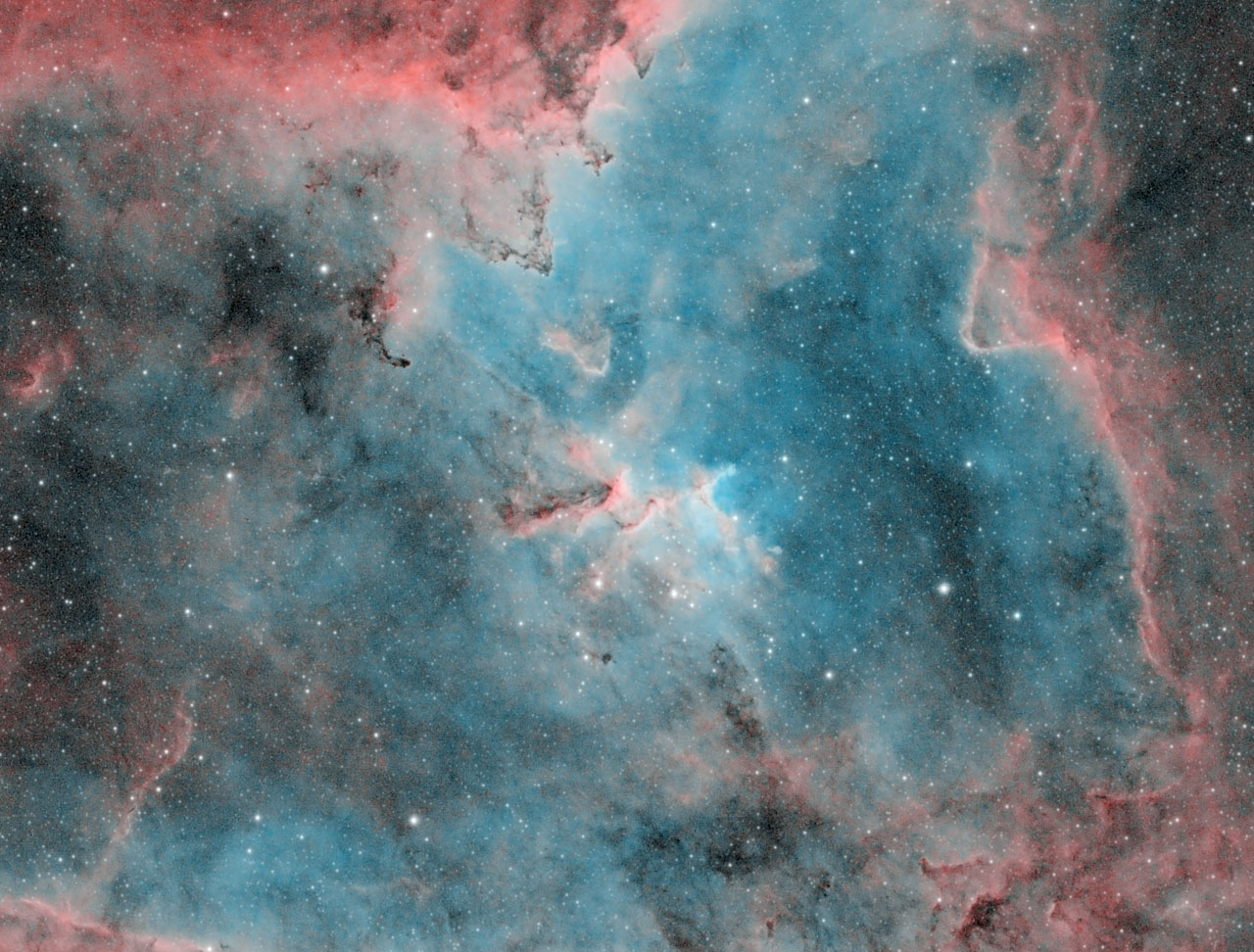As promised, here is a full color version of the Heart Nebula. In addition to capturing the O-III and S-II bands, I went back to capture more H-a, so the total is about 6 hours of H-a and 3 hours each of the other 2 bands. The color processing is (in my system of notation) H(SOO_starless), which means that I created a bi-color image with S-II as red and O-III as green and blue, then removed the stars from it, and applied the H-a image as luminance over the bi-color image. This leaves out a lot of details, but indicates how to interpret the colors: The red areas contain sulfur, the blue areas contain oxygen, and the structure details are defined by the hydrogen. The reason I removed the stars from the bi-color image is so that the colors can be manipulated without creating color artifacts around the stars, but it also results in there being almost no color in the stars, which is OK with me. Some people prefer to have colorful stars.
At the center of the Heart Nebula is Melotte 15, shown here in a crop from the above image:
This open star cluster and surrounding bright nebulosity is a popular target because of its brightness and complex structure. In this case it is not very well captured because it covers such a small portion of the image sensor, but it is worth studying, if only so that you may recognize it when seen again.
I’ve been “blogging” here at a much higher rate than I usually do, and that’s due largely to my being on vacation and not having a lot of other responsibilities. But I wouldn’t want you to think that I’ve been working hard at capturing these images. The Heart Nebula was shot entirely from my patio, and I was watching TV much of the time, while the camera was collecting photons. I expect this will continue for the next few weeks, except that I might be away for a few days for the next New Moon. So stay tuned for more astrophotos and astronomy talk.

